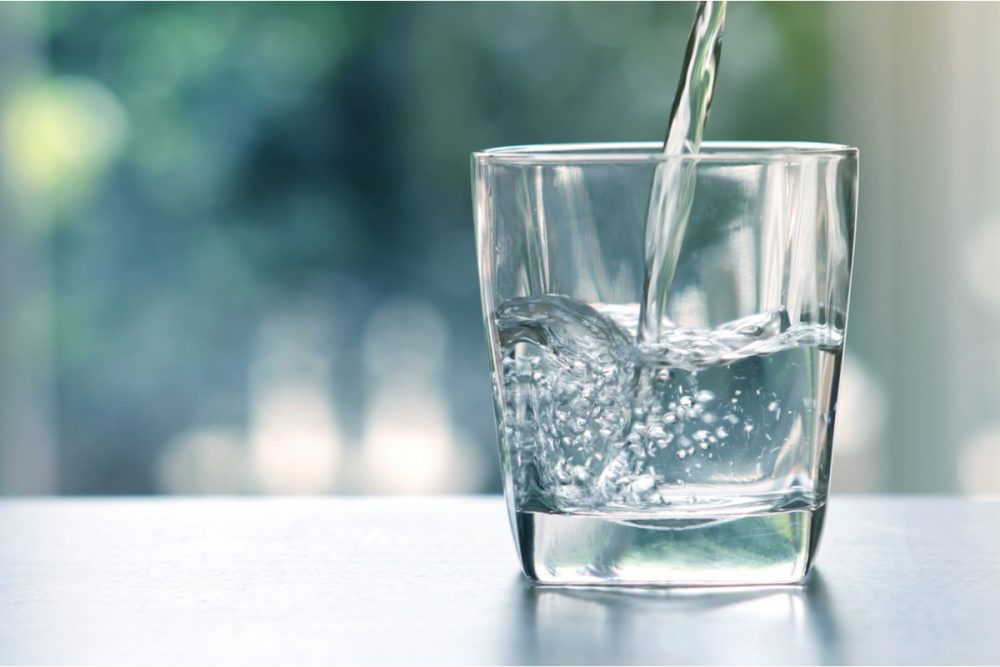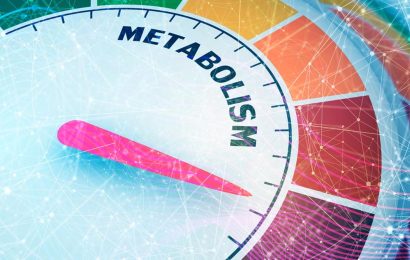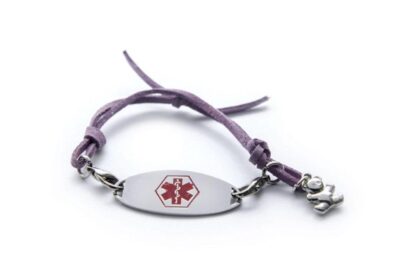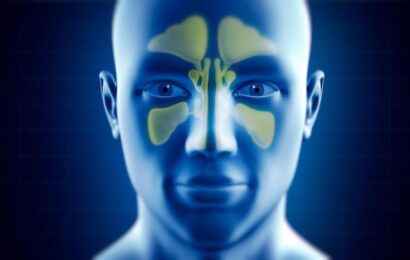We all know that drinking water is important, yet we tend to take this fluid for granted. After all, it’s a colorless, flavorless liquid, and it’s just not that exciting. But the importance of drinking water can’t be overstated. And there is some misinformation out there about water, too. So, now that summer is in full swing and you’re probably more aware of the need to stay hydrated, it’s as a good a time as any to take a “deeper dive” into the realms of water.
To get cutting-edge diabetes news, strategies for blood glucose management, nutrition tips, healthy recipes, and more delivered straight to your inbox, sign up for our free newsletter!
Water is made up of two elements.
You’ve heard water called “H2O” before. Water is made up of two hydrogen atoms and one oxygen atom that are held together by strong covalent bonds.
Humans are mostly water.
Up to 60% of the adult male human body is water; adult women are closer to 55% water because women have more fat tissue than men. The brain and kidneys are 80% to 85% water, the heart is 75% to 80% water, and muscles are 70% to 75% water. Even teeth have water: 8% to 10%.
Water is a nutrient.
We know that carbohydrate, protein and fat are nutrients, as are vitamins and minerals. Water is a nutrient, too. That’s because it’s essential. Our bodies actually make a small amount of water when certain nutrients are metabolized, but we lose water every day. For example, the kidneys may excrete anywhere from one pint to several gallons of water in form of urine daily. We also lose water through breathing and sweating. Vomiting and diarrhea cause water loss, as well. So, it’s critical for us to drink enough water to help replace water losses.
Water lubricates and cushions joints.
When the Tin Man in The Wizard of Oz stiffened up and couldn’t move, Dorothy squirted some oil into his joints to help him move again. Humans need water to keep joints lubricated. More specifically, water makes up something called synovial fluid that lubricates and cushions joints and cartilage, preventing bones from rubbing together. In addition, water keeps cartilage flexible and soft. If cartilage is dried out, or dehydrated, stiffness and pain can result.
Water helps make saliva and mucus.
Saliva helps to digest food, enables you to chew food comfortably, protects against cavities, helps you swallow and keeps your teeth strong, according to the American Dental Association. And, it’s 99% water. Mucus, that goopy, slippery substance may seem, well, gross, but it protects and moisturizes organs and tissues, keeping them from drying out. It also traps irritants, such as bacteria, dust and smoke.
Water regulates body temperature.
You know what happens when you get overheated — you start to sweat! Sweat is water and salt that are released from the sweat glands, and its purpose is to help you stay cool. If you’re dehydrated, you may not sweat. This is called anhidrosis. As a result, you may become overheated, and this can lead to heatstroke, a serious condition.
Water helps with digestion and removing waste.
The body requires water for numerous bodily functions, and these include digestion and removal of waste. A lack of water can cause problems with digestion, such as constipation. Dehydration can increase the risk of kidney stones and even kidney failure.
Water helps your brain function.
When you’re hydrated, you think more clearly, and your energy level is increased. Being even a little dehydrated can sour your mood, and make you feel more anxious and tired, and less able to cope with stress. And, staying hydrated can even help prevent headaches.
Water can help you look younger.
Looking younger may not be a goal of yours, but the point is that staying hydrated helps boost your skin’s elasticity and keeps it feeling smooth. Despite this, water, alone, isn’t exactly the “fountain of youth.” Wearing sunscreen is still essential to protect your skin.
Aiming for eight 8-ounce glasses of water every day is reasonable.
Truth be told, the amount of water you need per day is pretty variable. Factors that impact your fluid needs include your gender, height, weight and activity level. There’s no “one size fits all” when it comes to water, in other words. The National Academies of Sciences, Engineering, and Medicine have determined that an adequate daily fluid intake is about 15.5 cups of fluids for men, and about 11.5 cups of fluids for women. And what about that advice to drink “eight 8-ounces glasses water every day”? That’s still pretty good advice, and because it’s easy to remember, it’s a reasonable goal to aim for.
You may need to increase your water (and fluid) intake depending on certain factors.
Live in a hot or humid part of the country? Drink up. Same goes for if you exercise a lot, or if you have a fever, vomiting, diarrhea, bladder infection or urinary tract stones. And if you’re pregnant or breastfeeding, you’ll need 10 cups and 13 cups of fluid daily, respectively.
If you’re not a fan of water, don’t despair.
Drinking water is ideal, but if you don’t care for water, don’t have access to fresh water, or just can’t imagine drinking that much, you’ve got options. First off, other beverages count towards your daily fluid goal. Soft drinks, milk, juice, seltzer water — even coffee and tea all contain water. If you have diabetes, it’s best to steer clear of sweetened drinks, as the carbohydrate in them may boost your blood sugars (that includes sweetened energy or sports drinks). But unsweetened beverages are fine.
You can eat your water, in a sense.
Fruits and vegetables contain water, so they count towards your daily fluid goals, too. Fruits that are around 87% to 90% water by weight include watermelon, strawberries, pineapple, raspberries and oranges. High-water veggies are lettuce, celery, cucumber, tomatoes, peppers, asparagus and zucchini. Other foods that contain water include soup, sugar-free gelatin and pudding, sugar-free popsicles, and frozen fruit juice bars.
Caffeinated beverages can be hydrating.
Good news for coffee and tea lovers: caffeine-containing beverages don’t dehydrate you. Yes, caffeine does have a mild diuretic effect (that is, it can increase urination), but it doesn’t dehydrate you — as long as you stay within the bound of moderation (about 4 or 5 cups of caffeinated coffee per day, for example). Keep in mind that too much caffeine can cause other unwanted side effects, including a rapid heart rate, insomnia, anxiety and headache. Also, some people with diabetes notice that caffeine can increase blood glucose levels.
There ARE ways to make water taste better.
Some people dislike the taste of water. Yes, water does have a taste to it, thanks, in part to minerals, chemicals used to treat water (such as chlorine) and even how your own taste receptor cells perceive taste. One suggestion is to experiment with different types of water. For example, you may not care for your kitchen’s tap water, but you might like spring water or sparkling (fizzy) water. You can also purchase a water filter — either for your kitchen faucet or a water pitcher or bottle to remove odors and flavors from water. “Dress up” your water by squeezing in some fresh lemon or lime juice, or make a pitcher of infused water. Experiment with different fruits, vegetables and herbs to give a fresh flavor to your water without the calories and carbs. Check out recipes here.
Alkaline water isn’t all that it’s hyped up to be.
You might have read or heard about “alkaline water.” Alkaline water is water that has a higher pH level than tap water. There are numerous claims about the benefits of drinking alkaline water: It can treat acid reflux, reduce the incidence of osteoporosis, help flush your body of toxins, and even treat or prevent cancer. Not surprisingly, there’s little evidence to support any of these claims. Alkaline water is unlikely to alter the body’s pH; your kidneys and liver take care of “detoxing,” and again, no studies show that alkaline water impacts cancer in any way. If you like the taste of alkaline water, it’s likely OK to drink, although there are no studies at this time to support long-term safety. Keep in mind that, unless you make your own, most alkaline water is bottled water, which is more costly than tap water and has a significant environmental impact, as well.
Drinking water is important when your blood glucose levels are high.
High blood sugars can cause thirst, frequent urination, dry mouth, fatigue and irritability. When your glucose levels are high, the body tries to flush out excess glucose through the urine. Depending on how high your blood sugar is, this can lead to dehydration. Drinking water helps to compensate for fluid losses through urination, and also helps the kidneys flush out some of the glucose.
Drinking water may help you lose weight.
There are a number of ways that drinking water can help you reach your weight goal. One reason is that water tends to make you feel full. Having a glass of water before a meal can help limit how much you eat. Water temporarily increases your metabolic rate (the rate at which you burn calories). And hydrating with water while you exercise helps to increase the effectiveness of your workouts, lessens fatigue and prevents heat exhaustion. Of course, water in and of itself won’t lead to weight loss, but it can certainly be part of any weight-loss plan.
You can drink too much water.
Too much of a good thing isn’t good, and in the case of water, can be dangerous. Overhydration, or water intoxication, can increase the amount of water in the blood, causing low sodium levels. This can cause cells in the body to swell, and lead to headaches, nausea, vomiting, muscle weakness, increased blood pressure, double vision and confusion. In extreme cases, brain damage, seizures, coma and death can occur. Water intoxication is more likely to occur when someone drinks more than 1.5 liters of water in an hour.
Want to learn more about staying hydrated? Read “Best Beverages for Staying Hydrated” and “What to Drink.”





